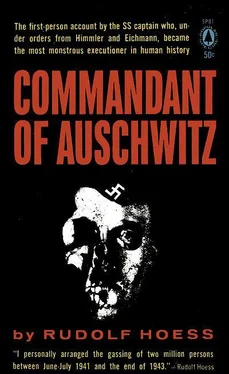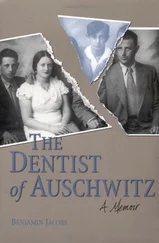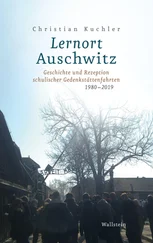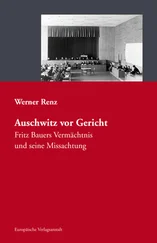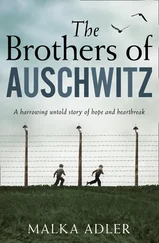How many bodies lay in the mass graves at Culenhof or how many had already been cremated, I was unable to ascertain.
Standartenführer Blobel had a fairly exact knowledge of the number of mass graves in the eastern districts, but he was sworn to the greatest secrecy in the matter.
Originally all the Jews transported to Auschwitz on the authority of Eichmann’s office were, in accordance with orders of the Reichsführer SS, to be destroyed without exception. This also applied to the Jews from Upper Silesia, but on the arrival of the first transports of German Jews, the order was given that all those who were able-bodied, whether men or women, were to be segregated and employed in war work. This happened before the construction of the women’s camp, since the need for a women’s camp in Auschwitz only arose as a result of this order.
Owing to the extensive armaments industry which had developed in the concentration camps and which was being progressively increased, and owing to the recent employment of prisoners in armaments factories outside the camps, a serious lack of prisoners suddenly made itself felt, whereas previously the commandants in the old camps in the Reich had often had to seek out possibilities for employment in order to keep all their prisoners occupied.
The Jews, however, were only to be employed in Auschwitz camp. Auschwitz-Birkenau was to become an entirely Jewish camp and prisoners of all other nationalities were to be transferred to other camps. This order was never completely carried out, and later Jews were even employed in armaments industries outside the camp, because of the lack of any other labor.
The selection of able-bodied Jews was supposed to be made by SS doctors. But it repeatedly happened that officers of the protective custody camp and of the labor department themselves selected the prisoners without my knowledge or even my approval. This was the cause of constant friction between the SS doctors and the officers of the labor department. The divergence of opinion among the officers in Auschwitz was developed and fostered by the contradictory interpretation of the Reichsführer SS’s order by authoritative quarters in Berlin. The Reich Security Head Office (Müller and Eichmann) had, for security reasons, the greatest interest in the destruction of as many Jews as possible. The Reichsartz SS, who laid down the policy of selection, held the view that only those Jews who were completely fit and able to work should be selected for employment. The weak and the old and those who were only relatively robust would very soon become incapable of work, which would cause a further deterioration in the general standard of health, and an unnecessary increase in the hospital accommodation, requiring further medical personnel and medicines, and all for no purpose since they would in the end have to be killed.
The Economic Administration Head Office (Pohl and Maurer) was only interested in mustering the largest possible labor force for employment in the armaments industry, regardless of the fact that these people would later on become incapable of working. This conflict of interests was further sharpened by the immensely increased demands for prisoner labor made by the Ministry of Supply and the Todt Organization. The Reichsführer SS was continuously promising both these departments numbers which could never be supplied. Standartenführer Maurer (the head of department DII) was in the difficult position of being able only partially to fulfill the insistent demands of the departments referred to, and consequently he was perpetually harassing the labor office to provide him with the greatest possible number of workers.
It was impossible to get the Reichsführer SS to make a definite decision in this matter.
I myself held the view that only really strong and healthy Jews ought to be selected for employment.
The sorting-out process proceeded as follows. The railroad carriages were unloaded one after the other. After depositing their baggage, the Jews had to pass individually in front of an SS doctor, who decided on. their physical fitness as they marched past him. Those considered capable of employment were immediately taken off into the camp in small groups.
Taking an average of all the transports, between 25 and 30 per cent were found fit for work, but this figure fluctuated considerably. The figure for Greek Jews, for example, was only 15 per cent, whereas there were transports from Slovakia with a fitness rate of 100 per cent. Jewish doctors and administrative personnel were without exception taken into the camp.
It became apparent during the first cremations in the open air that in the long run it would not be possible to continue in that manner. During bad weather or when a strong wind was blowing, the stench of burning flesh was carried for many miles and caused the whole neighborhood to talk about the burning of Jews, despite official counterpropaganda. It is true that all members of the SS detailed for the extermination were bound to the strictest secrecy over the whole operation, but, as later SS legal proceedings showed, this was not always observed. Even the most severe punishment was not able to stop their love of gossip.
Moreover the air defense services protested against the fires which could be seen from great distances at night. Nevertheless, burnings had to go on, even at night, unless further transports were to be refused. The schedule of individual operations, fixed at a conference by the Ministry of Communications, had to be rigidly adhered to in order to avoid, for military reasons, obstruction and confusion on the railways concerned. These reasons led to the energetic planning and eventual construction of the two large crematoriums, and in 1943 to the building of two further smaller installations. Yet another one was planned, which would far exceed the others in size, but it was never completed, for in the autumn of 1944, the Reichsführer SS called an immediate halt to the extermination of the Jews.
The two large crematoriums I and II were built in the winter of 1942-43 and brought into use in the spring of 1943. They had five three-retort ovens and could cremate about 2,000 bodies in less than twenty-four hours. Technical difficulties made it impossible to increase their capacity. Attempts to do this caused severe damage to the installations, and on several occasions put them out of action altogether. Crematoriums I and II both had underground undressing rooms and gas chambers in which the air could be completely changed. The bodies were taken to the ovens on the floor above by means of an elevator. The gas chambers could hold about 3,000 people, but this number was never reached, since the individual transports were never as large as that.
The two smaller crematoriums III and IV were capable, according to calculations made by the constructional firm of Topf of Erfurt, of burning about 1,500 bodies within twenty-four hours. Owing to the wartime shortage of materials the builders were compelled to economize during the construction of crematoriums III and IV and they were therefore built aboveground and the ovens were of a less solid construction. It soon became apparent, however, that the flimsy construction of these two four-retort ovens did not come up to the requirements. Number III failed completely after a short time and later ceased to be used altogether. Number IV had to be repeatedly shut down, since after its fires had been burning for from four to six weeks, the ovens or the chimneys burned out. The gassed bodies were mostly burned in pits behind crematorium IV.
The provisional structure number I was demolished when work was started on building section III of Birkenau.
Crematorium II, later designated bunker V, was used up to the last and was also kept as a stand-by when breakdowns occurred in crematoriums I to IV. When larger numbers of transports were being received, gassing was carried out by day in number V and numbers I to IV were used for those transports which arrived during the night. The capacity of number V was practically unlimited, so long as cremations could be carried out both by day and night. Because of enemy air attacks, no further cremations were permitted during the night after 1944. The highest total of people gassed and cremated within twenty-four hours was rather more than 9,000. This figure was attained in the summer of 1944, during the action in Hungary, using all the installations except number HI. On that day, owing to delays on the line, five trains arrived, instead of three, as expected, and in addition the carriages were more crowded than usual.
Читать дальше
